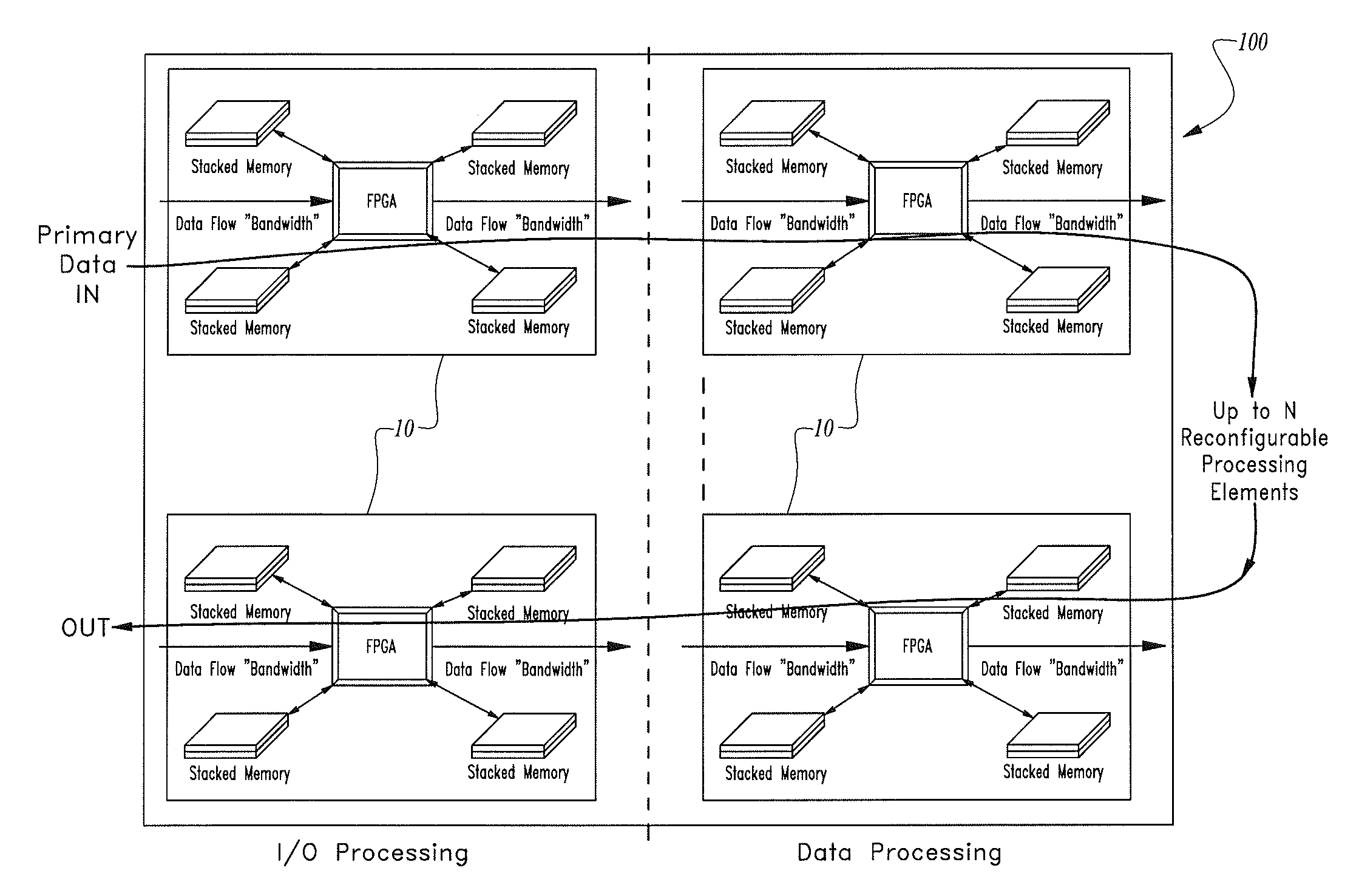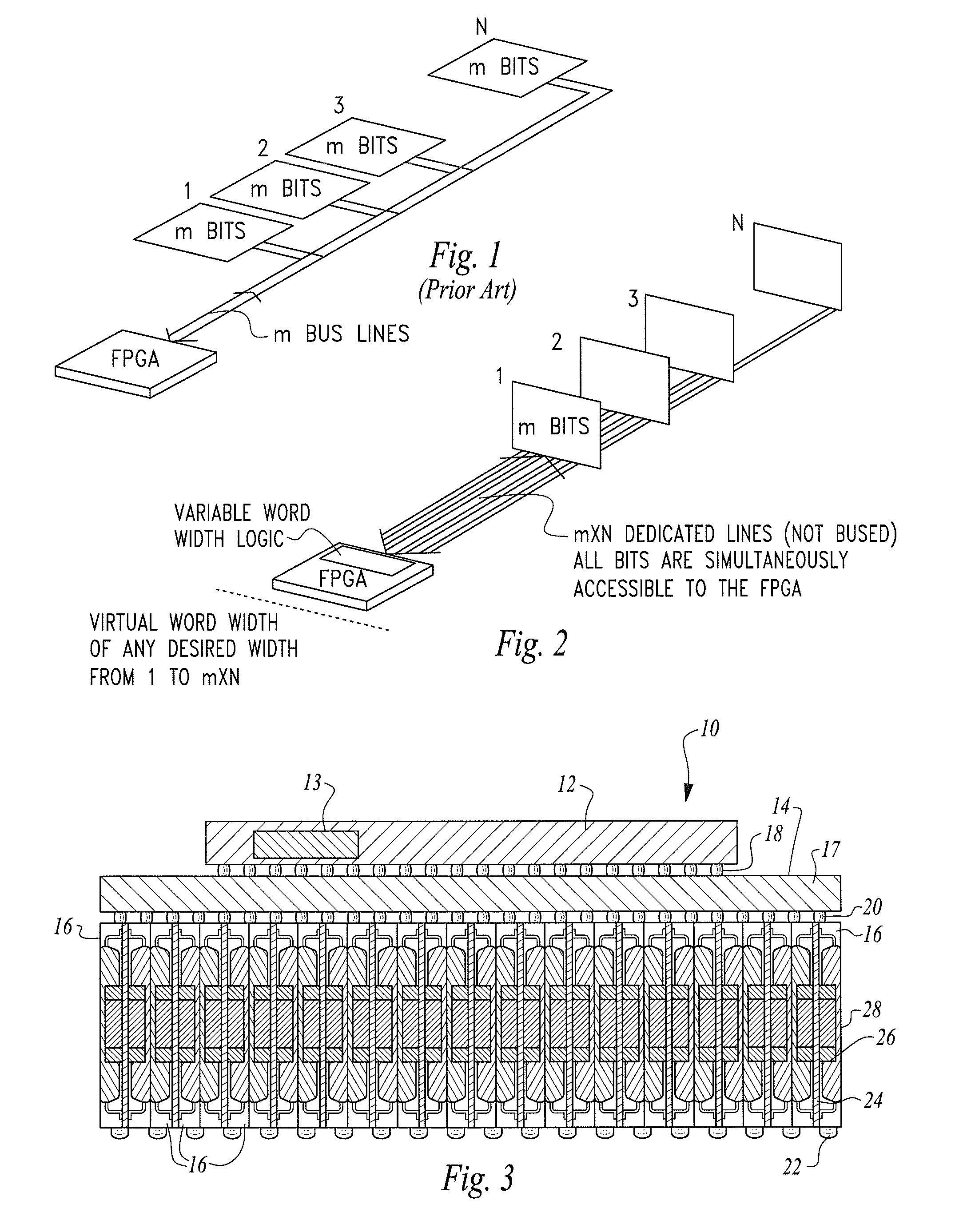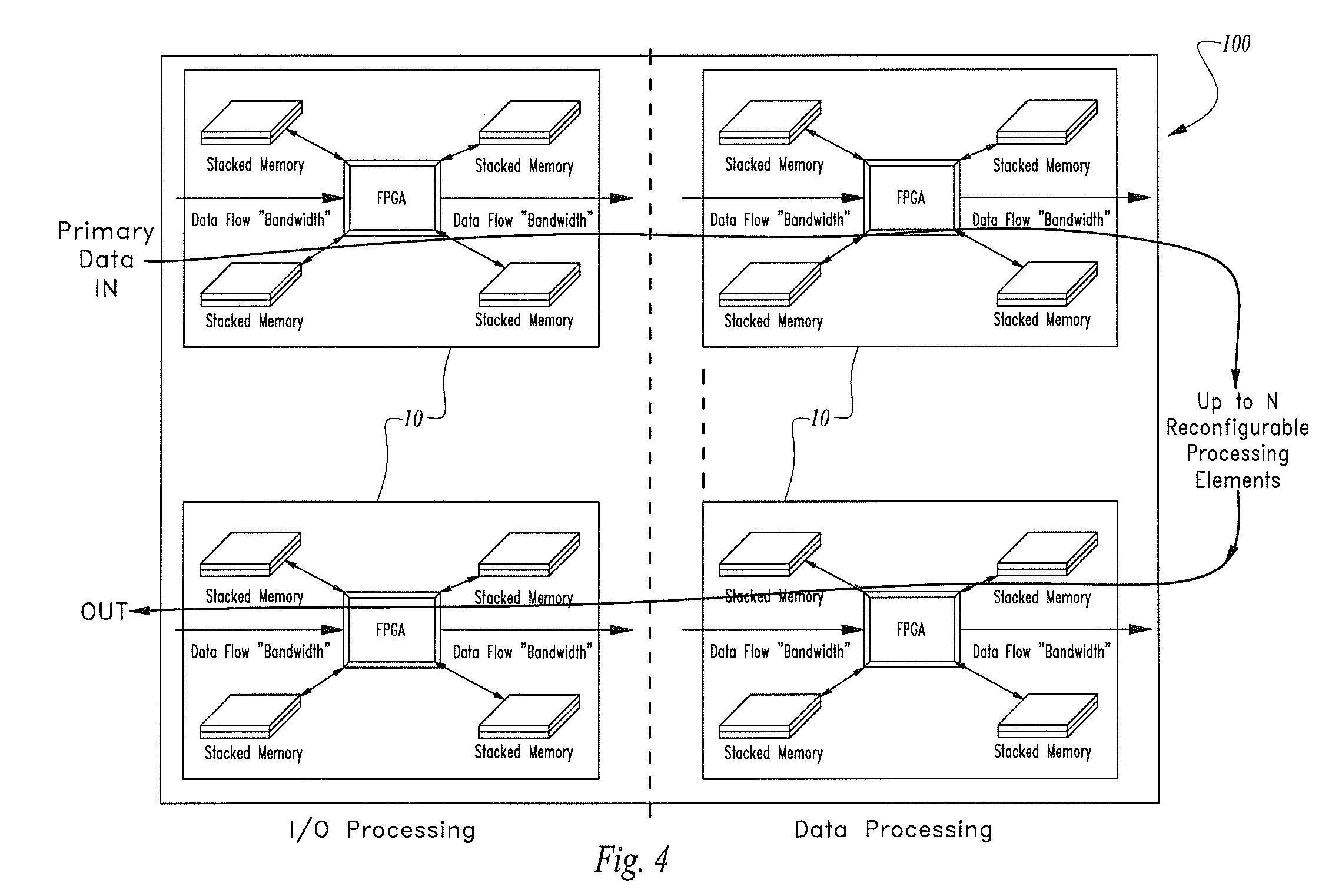High-speed processor core comprising direct processor-to-memory connectivity
a technology of direct processor and processor core, which is applied in the direction of computation using denominational number representation, pulse technique, instruments, etc., can solve the problems of fpga-based architecture, several limitations to the usefulness of fpga-based devices in their commercial off-the-shelf (“cot”) form, and inability to scale or meet the overall data processing speed needed
- Summary
- Abstract
- Description
- Claims
- Application Information
AI Technical Summary
Benefits of technology
Problems solved by technology
Method used
Image
Examples
Embodiment Construction
[0041]Turning now to the figures wherein like numerals denote like elements among the several views, FIG. 1 illustrates one of the limitations of prior art FPGA-based processor systems. As earlier stated, FPGAs are generally designed based on one or more design rules that assume a fixed and limited word width which is particularly limiting when used in combination with requisite large amounts of memory in demanding applications such as data processing, deep packet inspection and analysis, cyber-security and networking.
[0042]FIG. 2 is a simplified schematic view of a memory-enhanced field programmable gate array as disclosed in U.S. Pat. No. 6,856,167 entitled “Field Programmable Gate Array with a Variably Wide Word Width Memory” issued Feb. 15, 2005 where all memory bits are simultaneously available to the FPGA such that the FPGA, incorporating suitable logic, can implement a virtual word width of any desired width from 1 to mXN bits. The memory-enhanced field programmable gate arra...
PUM
 Login to View More
Login to View More Abstract
Description
Claims
Application Information
 Login to View More
Login to View More - R&D
- Intellectual Property
- Life Sciences
- Materials
- Tech Scout
- Unparalleled Data Quality
- Higher Quality Content
- 60% Fewer Hallucinations
Browse by: Latest US Patents, China's latest patents, Technical Efficacy Thesaurus, Application Domain, Technology Topic, Popular Technical Reports.
© 2025 PatSnap. All rights reserved.Legal|Privacy policy|Modern Slavery Act Transparency Statement|Sitemap|About US| Contact US: help@patsnap.com



